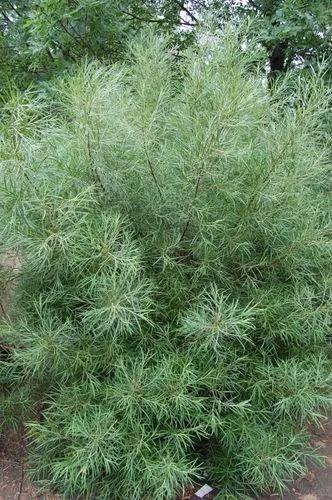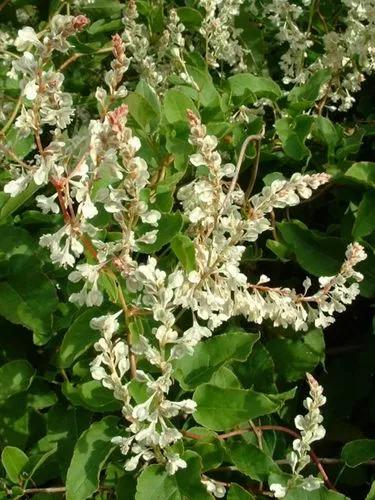The plant grows best at elevations of 4,500–6,500 ft (1,370–1,980 m). In areas with frost, the shrub grows no higher than 5 ft (1.5 m). However, in areas where the rainfall is heavy, such as the highlands of Ethiopia and regions near the equator, khat trees can reach 20 ft (6 m). Although khat thrives in areas of plentiful rainfall, the plant also grows during periods of drought when other crops fail. Khat's elliptical leaves, which resemble basil in size and shape, are reddish-green and glossy but become yellow-green and leathery as they age. The plant's flowers are small and white. The most prized parts of the plants are the young shoots, buds, and leaves near the top of the plant. Although the older leaves near the middle and lower sections of the plant are also used, as are the stems, these portions of the plant are considered inferior and less potent. The leaves are not picked until the plant is four years old; harvest occurs during the dry season. The first harvest is considered inferior to later ones. Leaves gathered from plants over six years of age are most valued, possibly due to greater alkaloid accumulation. In addition, the foliage of cultivated plants is preferred over wild plants. The production and consumption of khat occupy a prominent position in Yemeni culture. The increased affluence of that country in the 1980s and 1990s allowed an increasing percentage of the population to indulge in the habit, which the government has attempted through various measures to discourage. Greater demand, however, has fueled a substantial increase in khat acreage. As productivity declines, older coffee plantations are often converted to khat fields. Much of the land devoted to khat was formerly considered marginal for commercial agricultural purposes and later benefited from regular soil-enhancement programs. A portion of Yemen's khat crop is exported to Ethiopia and Kenya.
Catha Edulis Care
Catha Edulis



What is the plant
How to Care for the Plant

Fertilizer

Catha edulis seedlings are prone to damping off, so it is a good idea to spray with an anti-mould compound.

Sunlight

They like full sun, but will also tolerate partial sun and even shade.

Soil

They like loamy, free-draining soil, and minimal watering.
Ease your plant care routine with PlantIn's personalized system.

Temperature

Ideal temperature ranges to grow the khat plant are 5°-35°C (41°-95°F). They will not tolerate frost, though all may not not be lost if frost gets your qat plant (if the roots were not frozen).

Container

Re-pot into a larger pot when the roots appear at the bottom of the pot's drainage holes.

Popularity

79 people already have this plant 10 people have added this plant to their wishlists
What's wrong with your plant?
Related Plants
Discover more plants with the list below
Popular articles






